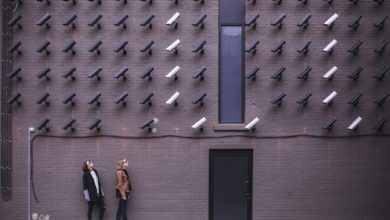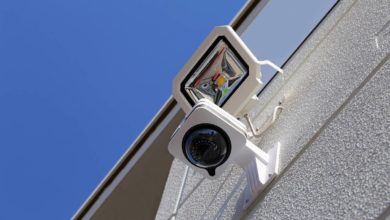A Security System Checklist for your Business
KEY TAKEAWAYS
Every business has valuable assets and resources, and protecting them is imperative for business continuity and upholding reputation. Investing in security is vital and requires planning and foresight. Business-wide solutions are often tailored to meet complex security needs, but any one solution must suit a business’ capacity and nature of functions. There are some measures that simply can’t be overlooked and can be adapted to suit varying needs.
Hire Experienced Security Personnel
While technological advancements certainly make physical security more comprehensive and convenient, a hired security staff is still essential. This goes beyond having security personnel on guard duty at access points of a building. The more effective approach is to expand this layer of protection to include mobile patrol security. Having security personnel stationed at specific areas of your building, although necessary, is still a limited approach due to its static nature. It leaves blind spots that remain vulnerable to break-ins. A mobile patrol team, on the other hand, involves guards patrolling on foot or by car, ensuring multiple locations come under surveillance at any given time, minimising oversight and risks of break-ins.
Another advantage of having security personnel on site is the quick response time in the event of an incident or potential threat, which could minimise or even prevent damage or loss to the business. A mobile security patrol also has a more visual presence and is likely to deter break-ins and other criminal activity, giving a business greater peace of mind and stability.
Access Protocols
Regardless of how large or small the number of employees, unrestricted access leaves your business vulnerable. Authorising access for employees via key cards and biometric scanners offers the first line of defence and prevents unauthorised personnel from entering the building.
Furthermore, a business or organisation can have employees allocated to different areas of a building engaging in work with varying levels of sensitivity and confidentiality. This calls for regulating and determining access limits to protect your staff and customers’ privacy and even avoid accidental security breaches. In the event of an emergency or official enquiry, access protocols also allow a business to trace when, where and who has accessed a site.
Security Cameras and Devices
IT and technology are crucial aspects of a robust security system. While round-the-clock surveillance may not always be possible with security personnel, installing alarmed systems, sensors, and CCTV cameras along the perimeter of a building provides complete security and peace of mind. Moreover, virtually patrolling the premises from a monitoring centre is a cost-effective alternative to mobile patrol security.
Video surveillance can also be used internally in high-security zones such as server rooms to monitor and identify personnel who access those areas. Cameras with motion-activated recording have the added advantage of storing footage, which can be accessed if and when required. An archive of footage allows a company to revisit the scene of the crime or incident to uncover and identify those involved during a given period of time.
Asset Protection
Servers are not the only valuable asset that requires an extra layer of security. Sensitive documents and other valuables in the building may require secure storage, such as in a safe or locked room with restricted access. Safes must be kept locked at all times and secured to the floor or wall so that they cannot be removed.
Theft and burglary are not the only concerns for a business. Accidental fires and even arson attacks can and do occur, resulting in crippling losses for a business. Installing smoke detectors or fire alarm systems, placing tested fire extinguishers at multiple locations and training employees on emergency protocols are some of the ways to prepare for an unforeseen emergency.
Cybersecurity
While backing up system data is essential to ensure business continuity, no business wants to contend with data loss and breaches. Adequate steps and investments should be made to minimise these risks as much as possible.
Regardless of the size of a business, there ought to be a department or unit with trained personnel dedicated to the task of IT needs and cybersecurity. There are many aspects to consider when it comes to cybersecurity, but there are a few that simply cannot be overlooked.
First off, secure WiFi is essential, with settings restricted to ensure the network is safe and cannot be accessed by outsiders. Malware and spyware are a constant concern with multiple devices connected to the network. Up-to-date and effective antivirus software that provides end-to-end protection will ensure data transmitted across devices is protected at all times. Regularly updating systems and software, and ensuring software licences don’t lapse, are required steps to maintain this security. Enabling a firewall and securing a VPN for employees to use in-house or access remotely also provide secure ways of using the network and working.
Policies and Documents
Once you have suitable security systems and protocols in place, it’s important to document policies and procedures. These can be shared organisation-wide so that employees are made aware of security risks and contingencies and the procedures they must adhere to.
Employee training and induction may be necessary as well to ensure that anyone accessing the premises and network is well-versed in best practices such as maintaining confidentiality, password protection, and emergency procedures.
In conclusion, the level of security depends on the size and complexity of a business or organisation. However, there are certain measures that are vital, while some others can be adapted to suit varying needs and requirements.





